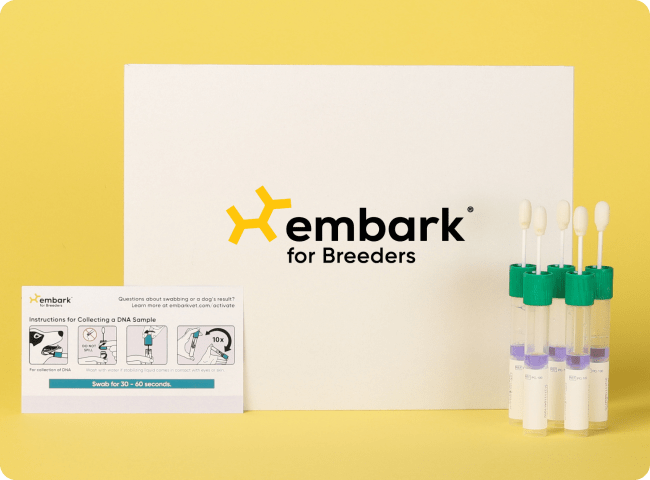Congenital Hypothyroidism with Goiter
Congenital primary hypothyroidism (CH) is attributed to abnormal development (dysgenesis) of the thyroid gland (e.g. agenesis, hypoplasia, and ectopia) or in rare cases by improper thyroid hormone synthesis, also called dyshormonogenesis (CDH). Inactivating mutations in the SLC5A5 gene produce an iodide transport defect which may be associated with goiters.
-
Signs and symptoms
Affected dogs may have a proportionate decrease in size compared to littermates or the presence of a goiter.
A goiter is an enlarged thyroid gland attempting and failing to produce thyroxine. Goiter may be observed as early as 3 weeks of age. Keep in mind, testing clear of this variant does not guarantee that a dog will not develop acquired hypothyroidism later in life. It’s important to have regular veterinary check-ups. Monitoring of a dog's health is key to catching and treating the first signs of age-related hypothyroidism. -
Diagnosis
Veterinarians may confirm the diagnosis by measuring increased plasma TSH associated with decreased total thyroxine (TT4) concentrations and free thyroxine (FT4) or via thyroid imaging (ultrasound or scintigraphy).
-
Treatment
Hypothyroidism is a lifetime condition, however it can be managed medically. Affected dogs can be treated with hormone replacement (like sodium levothyroxine) and additional treatment for heart disease if needed.
-
What to do if your dog is at risk
Actions
- Early diagnosis, consistent treatment, and regular blood work are key to properly managing this condition.
-
Genetic Information
This variant was first described in Shih-Tzus and can also lead to dilated cardiomyopathy (DCM), thyroid ectopic tissue, and/or follicular thyroid carcinoma. Contrary to TPO enzyme defects and other forms of CH, dogs affected by this SLC5A5 variant did not exhibit typical signs of CH such as mental dullness, disproportionate dwarfism, and alopecia.
Congenital Dyshormonogenic Hypothyroidism with Goiter is recessive, that is, a dog requires two copies of the variant to show signs of the disease from the variant.
Gene names:
SLC5A5 ‐ chr
Inheritance type:
recessive
Citations:
-
Breeds affected
This health condition affects the following breeds
Learn about your dog’s unique genetic health
Dog owners
Breed identification, health and trait insights, personalized care recommendations, and the world’s first canine relative finder—all in one leading dog DNA test.
Learn about the report for dog ownersShop the test
Breeding programs
Embark’s test for breeding programs is one comprehensive DNA test designed with your needs in mind.
Learn about the report for breedersShop the test



